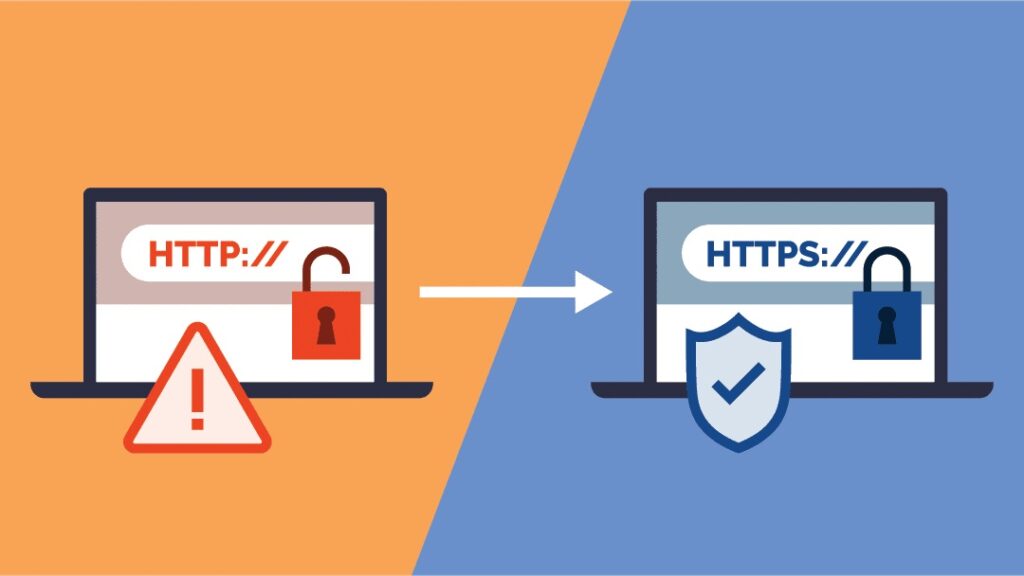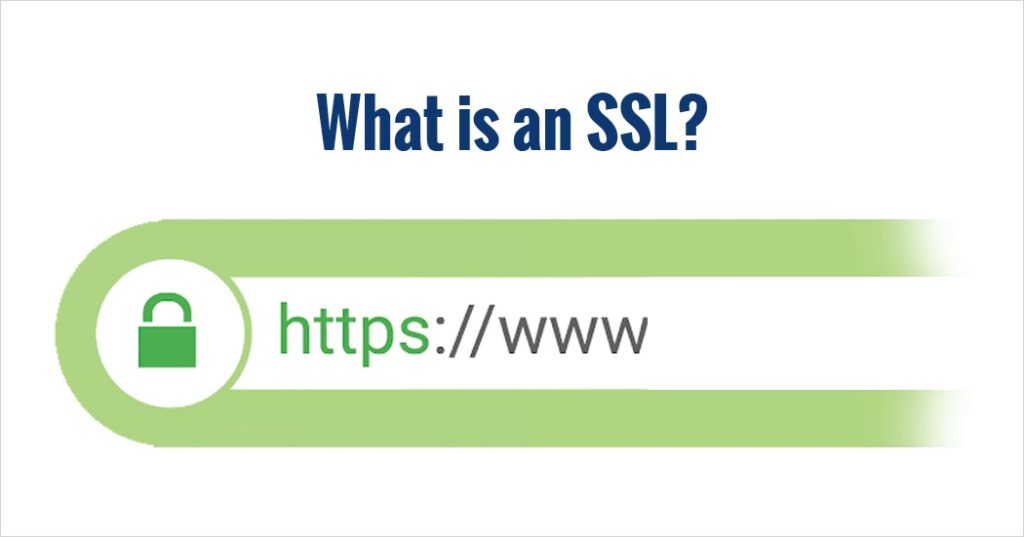Have you ever wondered about the magic that happens behind the scenes when you click on a link or visit a website? Every time you interact with the internet, you’re engaging with a complex system of protocols and technologies that make it all possible. Two of the most crucial components in this digital ballet are HTTP and HTTPS.
In this beginner’s guide, we’re going to peel back the curtain and reveal the hidden story behind these acronyms, helping you understand why they’re so vital in ensuring your online security and privacy.
Meet HTTP – The Foundation of the Web
What is HTTP?
Let’s start with the basics. HTTP stands for Hypertext Transfer Protocol. It’s the foundation upon which the World Wide Web is built. Whenever you type a URL into your browser or click on a link, your browser sends an HTTP request to a web server. This request asks for the specific webpage you want to visit. Once the server receives the request, it sends back the requested webpage as an HTTP response, allowing you to see the content in your browser.
How Does HTTP Work?
Imagine you’re ordering a pizza. You call the pizzeria, place your order, and wait for the delivery. Similarly, your browser acts like the caller, the web server is the pizzeria, and the webpage is the pizza. This back-and-forth communication follows a set of rules laid out by the HTTP protocol. However, there’s a catch – this communication isn’t always private.
The Need for Secure Connections

The Problem with Plain HTTP
HTTP is simple and effective, but it has a major flaw: it’s not secure. When you transmit data using plain HTTP, it’s like sending postcards through the mail – anyone who intercepts it can read its contents. This vulnerability leaves your personal information, passwords, and other sensitive data exposed to potential attackers. That’s where HTTPS comes to the rescue.
The Rising Threat Landscape
In today’s digital age, cyber threats have become more sophisticated and prevalent than ever before. Hackers and malicious entities are constantly prowling the online landscape, seeking vulnerabilities to exploit. With plain HTTP, you’re essentially leaving the door wide open for these cybercriminals to gain access to your private information. They can easily carry out attacks such as eavesdropping, data interception, and even injecting malicious code into the data stream.
Protecting Your Digital Footprint
Your online activities leave behind a trail of digital footprints, much like breadcrumbs in a forest. Without proper encryption, these footprints can be traced back to you, potentially compromising your identity, privacy, and security. Whether you’re logging into your email, making online purchases, or simply browsing social media, every action you take can be monitored and exploited without the protection of HTTPS.
Embracing HTTPS for a Secure Future
As the risks associated with plain HTTP become more evident, it’s clear that a shift towards HTTPS is essential for ensuring a secure online experience. The convenience and ease of HTTP must be balanced with the need for privacy and protection. By adopting HTTPS, websites and online services can safeguard their users’ data, ensuring that their sensitive information remains confidential and out of the hands of malicious actors.
The SSL/TLS Protocols Demystified
The SSL/TLS Connection
Behind the scenes of HTTPS, there’s a fascinating duo: SSL (Secure Sockets Layer) and its successor, TLS (Transport Layer Security). These protocols establish the secure connection between your browser and the web server. They use a combination of encryption algorithms to ensure the confidentiality and integrity of your data.
The Handshake Process
Imagine you’re meeting a friend for a secret chat. To make sure you’re talking to the right person, you exchange secret handshakes that only the two of you know. SSL/TLS employs a similar concept. When your browser connects to a website, a handshake process occurs. This involves the exchange of keys and a series of checks to ensure that both parties are who they claim to be. Once this handshake is complete, the encrypted communication begins.
Certificates – The Digital IDs of the Web

What Are SSL/TLS Certificates?
SSL/TLS certificates are like digital passports for websites. They verify the authenticity of the website you’re visiting and play a key role in the encryption process. These certificates are issued by Certificate Authorities (CAs) after rigorous identity checks, ensuring that the website is legitimate.
The Padlock and Trust Indicators
Next time you visit a website, look for a padlock icon next to the URL in your browser’s address bar. This small padlock is a powerful symbol – it indicates that the website has an SSL/TLS certificate and is using HTTPS. Additionally, some websites have an Extended Validation (EV) certificate, which displays the website owner’s name in the address bar, giving you more assurance about the site’s authenticity.
Why HTTPS Matters for You
Protecting Your Data
In an age where data breaches and cyberattacks are becoming increasingly common, HTTPS acts as a digital shield, safeguarding your sensitive information from prying eyes. Whether you’re entering your credit card details or sharing personal messages, HTTPS ensures that your data remains confidential.
SEO and User Trust
Search engines like Google prioritize secure websites in their search results. If your website uses HTTPS, it’s more likely to rank higher in searches. Moreover, users are more likely to trust and interact with sites that display the padlock icon, knowing that their information is in safe hands.
The Future is Secure
As the internet continues to evolve, security will remain a top priority. More websites are making the switch to HTTPS to provide a safer browsing experience for their users. By understanding the importance of secure connections and the role of HTTPS, you’re equipped to make informed choices and navigate the digital landscape with confidence.
Frequently Asked Questions
What is HTTP and HTTPS?
HTTP stands for Hypertext Transfer Protocol, the foundation of the World Wide Web. It’s how your browser communicates with web servers to retrieve webpages. HTTPS, on the other hand, stands for Hypertext Transfer Protocol Secure. It’s a more secure version of HTTP, ensuring that your data is encrypted when transmitted between your browser and the web server.
Why is plain HTTP not secure?
Plain HTTP doesn’t encrypt the data you send and receive, making it susceptible to interception. This means that attackers can easily access your personal information, passwords, and any other sensitive data you transmit. It’s like sending postcards through the mail – anyone who intercepts them can read the contents.
How does HTTPS work?
HTTPS uses encryption to secure the data transmission between your browser and the web server. When you visit a website using HTTPS, your browser and the server perform a “handshake” to establish a secure connection. This involves exchanging encryption keys and ensuring the authenticity of the server. Once the secure connection is established, your data is encrypted and can only be decrypted by the intended recipient – the web server.
What are SSL/TLS certificates?
SSL/TLS certificates are digital credentials that verify the authenticity of a website and enable the encryption process in HTTPS. They’re issued by Certificate Authorities (CAs) after verifying the identity of the website owner. These certificates play a crucial role in assuring users that the website they’re visiting is genuine and secure.
How can I tell if a website is using HTTPS?
Look for the padlock icon next to the URL in your browser’s address bar. The padlock indicates that the website is using HTTPS and has a valid SSL/TLS certificate. Some websites might also display the website owner’s name in the address bar with an Extended Validation (EV) certificate, providing additional trust.
Is HTTPS important for all websites?
Yes, HTTPS is essential for all websites, regardless of their content. It not only secures the data exchanged between users and the website but also boosts trust and credibility. Additionally, search engines like Google prioritize HTTPS websites in search results, which can improve your website’s visibility.
Can HTTPS prevent all cyberattacks?
While HTTPS significantly enhances security by encrypting data, it’s not a guarantee against all types of cyberattacks. It primarily focuses on securing data in transit between your browser and the server. To ensure comprehensive security, websites should implement other cybersecurity measures like firewalls, regular updates, and secure coding practices.
How can I switch my website from HTTP to HTTPS?
Switching your website to HTTPS involves obtaining an SSL/TLS certificate, installing it on your web server, and configuring your server to use HTTPS. Many web hosting providers offer easy ways to obtain and install certificates. However, the process might vary depending on your hosting platform, so it’s a good idea to consult your hosting provider’s documentation or support.
Does using HTTPS slow down my website?
Initially, there might be a slight performance difference due to the encryption and decryption process. However, with modern advancements in technology and web server optimization, the impact on website speed is minimal. The benefits of enhanced security and user trust far outweigh any negligible speed difference.
Is HTTPS the future of the internet?
Absolutely. As the internet continues to evolve, security remains a top concern. More and more websites are making the shift to HTTPS to ensure a safer browsing experience for their users. It’s not just a trend; it’s becoming the standard for a secure online environment.
Conclusion: Unveiling the Magic Behind Secure Links
And there you have it – the hidden story behind HTTP and HTTPS, the dynamic duo that makes the web tick while keeping your data secure. From the humble beginnings of HTTP to the intricate encryption of HTTPS, every click you make is underpinned by these protocols. So next time you see that padlock icon, you’ll know that your online journey is traveling the secure path. Happy and safe browsing!

